All You Need To Know About Gluten!
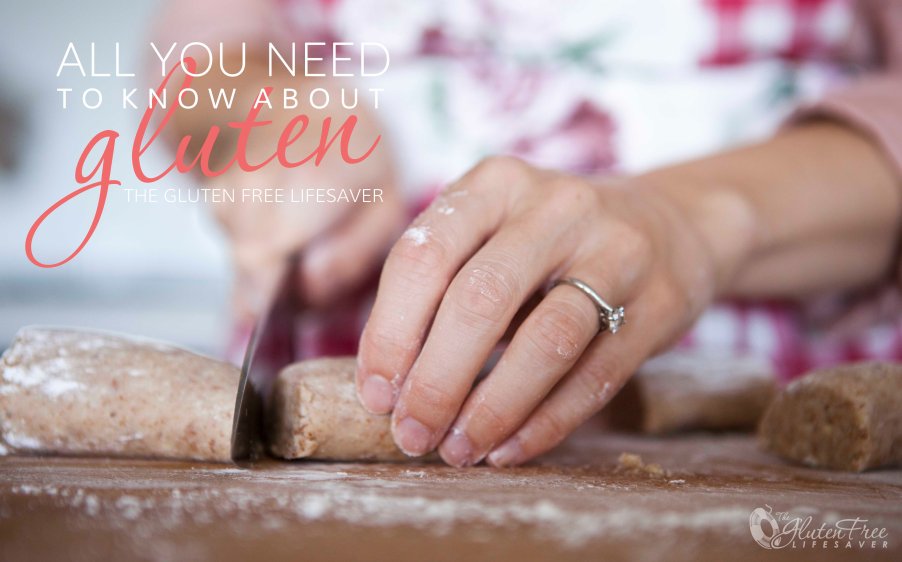
 On this page, you can find brief explanations for gluten and coeliac disease. You may click on the links provided throughout for in-depth information.
On this page, you can find brief explanations for gluten and coeliac disease. You may click on the links provided throughout for in-depth information.
WHAT IS GLUTEN EXACTLY?
Gluten is a protein composite found in “grass related” grains, and is made up of two proteins called prolamins and glutelins.
These proteins exist in all grains and confusingly enough they’re all called “gluten”. However, as of what we know today, only the prolamins in wheat (gliadin), barley (hordein), and rye (secalin) are harmful to those with coeliacs disease, DH or non-coeliac gluten intolerance.
Some research also suggests that the prolamins in oats (called avenin) can be a source for concern. The Celiac Sprue Association reports that avenin, in fact contains some of the amino acid sequences found in gluten that triggers an auto-immune response, though in much lower quantities. Different authorities have taken different stands on this topic, and as a result you may find “certified gluten free” oats (free of cross-contamination) in countries such as USA, UK and throughout Scandinavia. In Australia and New Zealand however it has been decided that oats are not to be considered gluten free.
It is important to note that if you wish to purchase “gluten free” oats, you must make sure it is labelled as such. This is because oats is frequently cross-contaminated during handling and production. An example is how crops are regularly moved around to keep the soil fertile, resulting in the odd stray becoming mixed up in the batch.
WHAT DOES GLUTEN DO?

(source)
Gluten is the “glue” that holds bread, pasta and cake together. It gives elasticity, a chewy texture and it helps food keep its shape. When the yeast in baked goods releases gasses, gluten creates the elastic net that “traps” them, and allows the dough to rise.
Because of its desired qualities gluten is often also added to baked goods to make them look and taste even “greater”.
Gluten is widely used as additives in other food items, as well as in cosmetics, conditioners and medication.
WHERE IS GLUTEN FOUND?
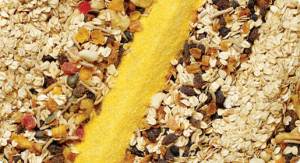
(source)
Gluten naturally occurs in grains, and the harmful versions are found in wheat, barley and rye (and possibly oats).
Gluten can be added to foods, either in an obvious or in a “hidden” manner.
The easy ones to detect are the likes of “wheat starch”, “barley malt” or “wheat bran”. They are simple enough to understand because they contain the names of the grains we know to avoid.
Then there’s the seemingly innocent ingredients like “caramel colouring” and “baking powder”, that may surprise you.
The confusion starts when words like “Dextrines”, “Emulsifiers” and “Amp-Isostearoyl Hydrolyzed” turn up on the labelling..
It is impossible to learn every word you might ever come across on a label. You can, however, find a list of items that are unsafe for a coeliac on this link, which you may print out and keep in your wallet.
WHICH FOODS DEFINITELY DON’T CONTAIN GLUTEN?
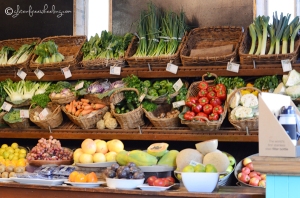
(source)
Many, many foods, in fact, most foods (which you will soon discover) don’t contain any gluten and are perfectly safe! It takes a while to learn what’s what, and I feel like I can eat a million more food items now than when I was first diagnosed. Naturally it was always the same, but I know more now and the world “opens up” as I learn.
Naturally gluten free is always the best way to go. A good place to start is vegetables and fruits, unprocessed meats, seafood and poultry, as well as carbs like potatoes, corn and rice. As a rule, if it hasn’t been spiced, mixed or blended, you can eat it. Always wash or peel as some items may at some point have touched gluten-containing foods. Better safe than sorry.
There are many “specialty” grains and flours that are naturally gluten-free, such as buckwheat (which isn’t a wheat at all!), tapioca, amaranth, arrowroot, millet, quinoa, sorghum, gram flour, almond flour and soy flour. The list goes on and on, and learning to use these “new” grains can be a lot of fun. A list of gluten-free grains can be found here, and a list and glossary of gluten-free flours can be found here.
A safe ingredients list from Coeliac Australia (in the shape of an App) can be found on this link.
WHAT ARE THE RULES FOR GLUTEN-FREE LABELLING?
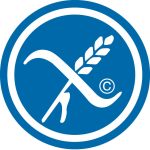
(source)
Rules about gluten labeling differ from country to country, and it is important that you familiarise yourself with what applies to you.
In Europe and the US, food containing up to 20 parts per million of gluten may be labeled gluten free. In Australia and New Zealand, food labeled gluten-free cannot contain any detectable gluten or oats. In addition, AUS and NZ have a bracket for “low gluten” which allows for up to 200 ppm of gluten. Be aware of the “low gluten” foods as they are not suitable for coeliacs.
Parts Per Million (ppm) explains the quantity of gluten allowed. 1 ppm equals 1mg per liter or 1 mg per kg. This means that food containing 20ppm of gluten has 0,002% gluten content. Naturally, if you eat large amounts of foods containing “very little gluten”, eventually it will add up and you are in fact eating gluten.
Some products are debatable in this context. One of them is glucose syrup made from wheat. In Europe this is considered to be safe for coeliacs, yet down-under it is not. More on the discussion on differences in gluten labeling here.
WHO SHOULDN’T EAT GLUTEN
So there’s a fad going on. Apparently Victoria Beckham and Gwyneth Paltrow are on a “gluten free diet” now.
The good thing about the rising trendiness of “going gluten-free” are the heaping shelves in the health food section. The not-so-great side effects are the misconceptions of the severity of coeliac disease, the waiters who get sick of “hearing about it”, and the possibility it might “blow over” like so many fads before it.
I was recently at a dinner party with people who didn’t know me, and thus hadn’t prepared anything I could safely eat. As I helped myself to nothing but steamed vegetables, a fellow guest naturally asked why. No sooner had I uttered the word “gluten”, than had he rolled his eyes back and loudly exclaimed his frustration with the “so-called gluten allergies” everyone suddenly seems to have attracted.
It’s awkward enough to have to be the odd one out at social gatherings which include food (as they all do), not to have to endure public ridicule by loud-mouthed besserw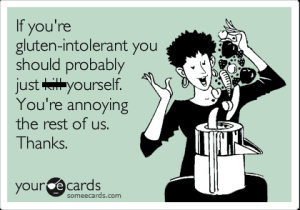 issers with verbal diarrhea as well. My favoured tactic is to retaliate with an equally public exposure of their ignorance. It seems to do the trick, although it really shouldn’t be necessary.
issers with verbal diarrhea as well. My favoured tactic is to retaliate with an equally public exposure of their ignorance. It seems to do the trick, although it really shouldn’t be necessary.
A fairly disturbing example of the miseducation arising from the fad was recently expressed in an article on the Science 2.0 blog, titled “Celiac: The Trendy Disease for Rich White People”, (via Gryphon Myers) and is further made apparent in this rather tasteless joke:
I can see how it could be perceived as funny.. for someone who does not have a gluten related condition.
Some must, and others can choose
That being said, if you do not have a gluten related condition the benefits of a gluten free diet are highly subjective, and this is a much debated topic. Some may find that cutting (or reducing) gluten has a positive effect on aspects of their health, however radically changing your diet without consulting a health care professional may lead to deficiencies.
The ones who need to cut gluten out of their diet however are those diagnosed with either coeliacs disease, non-coeliac gluten sensitivity, gluten intolerance, gluten entereopathy, Dermatitis Herpetiformis or celiac sprue. Some of these diagnosis overlap, but all wordings apply.
“Because as it turns out, you’re hollow on the inside. That’s right… from the mouth to the anus – we humans have one long hollow tube that our body considers to be part of the “outside environment.” And when we eat food, it’s actually passing through our body on the outside, while we absorb all the good stuff and let the bad stuff pass out the other end.” (Jordan Reasoner)
I thought that description was quite novel and really rather smart! And it holds a lot of truth; our digestive system, from start to bottom, is created to absorb into the body what it needs.
WHAT IS COELIAC DISEASE?
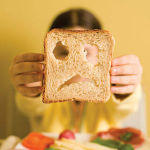
(source)
Coeliac disease is an autoimmune disorder, which sort of means that the body “attacks itself” when exposed to gluten. The walls of the small intestine is lined with millions of finger-like villi. Together the villi greatly increase the surface of the intestine (think ruched fabric), and thus provide for a lot more time for nutrients to be absorbed. You can imagine that the nutrients have a much longer way to travel with plenty of villi, up and down lots of hills, which gives the body much longer time to gather all the nutrients in the food.
As a person with coeliacs disease consumes gluten, these villi become damaged. This is called “villous atrophy“.The longer you are exposed to gluten, the more damage can be done. Someone who has gone undiagnosed for a very long time can have next to no villi left.
When the villi gets damaged or disappears the body cannot absorb nutrients properly, and deficiencies may start to manifest.
The numbers are quite astonishing; an estimated 1 in 133 people have coeliac disease, and as much as 1 in 22 of people with a coeliac first-degree relative have it. Not enough research has yet been conducted to firmly conclude on these figures, and it is furthermore estimated that the condition is on the rise. The increase in cases is believed to be of environmental origin rather than a matter of awareness, and studies are currently being conducted on the subject.
On top of these numbers are all other non-coeliac gluten disorders, so you can only imagine how many people are wandering the earth with a tummy ache!
WHERE DOES IT COME FROM?
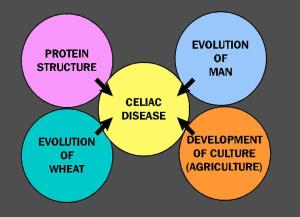
(source)
For coeliacs disease to “kick in”, all of three factors must be present; genetic disposition, gluten consumption and an external “trigger”. The trigger is highly variable, and can range from pregnancy or surgery, to exposure to parasites. Personally my disease seems to have been triggered by a horrid round of salmonella.
Apparently one cannot develop coeliacs disease (even with genetic predisposition and external triggers) if gluten is never present. However, I remember reading (somewhere, sometime) that introduction of gluten into an infants diet between 4 and 6 months of age renders a better chance of avoiding the disease later in life. Exposure sooner or later did not give the same results. (I’d like to underline that I cannot remember the source of this statement, but I made a mental note as the idea that I may help prevent the disease in my children is quite astonishing.)
The fact that coeliacs disease is genetic means that it is hereditary. In other words, one or both of your parents must carry the gene(s). This does not however mean that your parents need to have active coeliacs disease, nor does it mean that you must have it if they do.
Approximately 95% of coeliac patients have the gene HLA-DQ2, and the remaining patients are usually HLA-DQ8 positive. Still, about 20-30% of people without coeliacs disease have also inherited one of these genes, and it only increases the risk of actually developing the disease by 36-53% (source).
HOW DO I KNOW IF I HAVE COELIAC DISEASE?
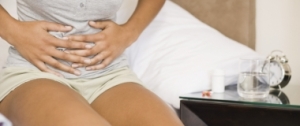
(source)
As of today, the only universally medically recognized diagnostic method for discovering coeliac disease is through an endoscopy of the small intestine.
Before an endoscopy is recommended, the procedure is usually to screen a sample of blood for gluten antibodies. This is often referred to as a “Coeliac Panel” blood test. However, this test is not 100% reliable and can show a false negative, which it did in my case. It may also show a false positive, although this is even rarer still. The accuracy increases greatly when two specific tests are used in combination, namely tTG-IgA and DGP IgG, reducing the false negative rate to 16%.
You may also take a blood test to screen for genetic predisposition to coeliac disease.
Endoscopies may show a false negative, but never a false positive. A false negative endoscopy may be due to misinterpretation by the physician, that not enough tissue was collected, or the fact that the disease is in its early stages and the villi has undetectable damage.
My first endoscopy at 21 years of age was negative, only to be followed by a positive test 9 years later. This could mean that the illness hadn’t commenced yet, but given the presence of symptoms leading to the endoscopy, it might be plausible that my villi simply weren’t sufficiently damaged at that point in time for the disease to be detected. Also, I had chosen to cut gluten from my diet in advance of the endoscopy, not knowing the possible consequences of that choice.
It is very important that you do not stop eating gluten before you have been properly diagnosed, even if it hurts. I did, and it resulted in a lot of delay and confusion ten years after when the symptoms had become overpowering. I had a (false) negative blood test, and coupled with a ten-year-old negative endoscopy, doctors didn’t even consider coeliac disease during their process of diagnosis! I was very sick for a lot longer than necessary. Don’t let that happen to you.
WHAT ARE THE SYMPTOMS?
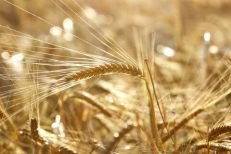
(source)
Symptoms of coeliac disease are plentiful and varied. You can read about my experiences with coeliac disease here, and about general symptoms of gluten exposure here.
Symptoms may include (but are not limited to):
Bloating, gas or abdominal pain
Constipation or diarrhea
Migraine headaches
Brain “fog”
Dizziness
Nausea
Miscariage and infertility
Low calcium levels
Lactose intolerance
Lowered immune system; frequent flus, colds, throat infections or other infections
Joint pain
Significant unexplained weight loss or weight gain
Constipation or diarrhea
Chronic fatigue and weakness
Unexplained anemia
Premature onset of osteoporosis
Autoimmune thyroid disease
Autoimmune liver disease
Very itchy skin rash with small blisters
Irritability or behavior change
Mouth ulcers
Tingling or numbness in hands or feet
Migraine headaches
You are not a hypochondriac!
Looking at this list there is no wonder many undiagnosed coeliacs are labelled “hypochondriacs”. I certainly started feeling that label after a while. My sister frequently used the word and even my mum started hinting that I may be a bit “over-sensitive”. After a while I even started wondering if they might be right. Was I “thinking myself sick”?
Many of the symptoms are being linked to something called “leaky gut syndrome”. Leaky gut is not a medically recognized condition, but is frequently referred to in conjunction with coeliac disease. The idea is that a permeability of the gut wall allows larger particles to “leak” out into the body causing an immune reaction.
Coeliac disease is one of the most commonly misdiagnosed (and undiagnosed) conditions.
The most common misdiagnosis are:
Irritable Bowel Syndrome
Crohn’s disease
Ulcerative colitis
Stomach ulcers
Diverticulosis
Intestinal infections
Cystic Fibrosis
Chronic fatigue syndrome
Depression
Malabsorption
Pancreatic insufficiency
Reduced bile salts
Lymphatic obstruction
Bacterial overgrowth
Lactase deficiency
Viral gastroenteritis
Whipple’s disease
Giardiasis Diseases
Personally I had received no less than 15 various diagnosis through the years of being an undiagnosed celiac. None of which were based on much more than a physicians opinion it would seem in retrospect. You can read more about my road to a diagnosis here.
WHAT HAPPENS IF I DON’T TREAT MY COELIAC DISEASE?
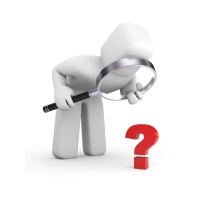
(source)
Results of untreated coeliac disease are many. In addition to the symptoms described above, you can develop infertility, bone loss, bowel cancer, osteoporosis, neurological and psychiatric conditions, congenital malformations, short stature (in children), tooth enamel defects, pancreatic disease, internal haemorrhages and organ disorders.
In other words; if you have any concerns, are experiencing symptoms, or if you have coeliac disease in the family -get checked! Talk to your doctor, and explain your concerns. Your doctor will be able to offer you the right testing.
WHAT CAN I DO TO HEAL?
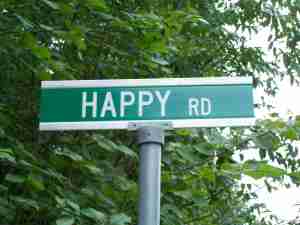
(source)
This is the good part! All you have to do to get better is stop eating gluten. Although that might sound daunting, it really is all you have to do! No (more) meds, no surgery, no rehab, just good food. Food really can cure, and as of yet is the only thing that will cure symptoms stemming from coeliac disease. Going gluten free will technically not cure the actual disease, once a coeliac always a coeliac, but you will no longer be in pain or malnourished.
The earlier the disease is found, the faster the healing. For adults who have been undiagnosed for a long time, healing can be a slow process, it might even take years. Some seriously damaged villi might never fully recover, but will, however, improve remarkably. It is never too late to start feeling better!
Give your body some time
If you have been undiagnosed for a while you may have to give your body a bit of time to heal. If you have, in addition, developed other conditions as a result of going undiagnosed for a long time, naturally these will have to be treated on the side of your going gluten free.
There are things you can do to help battle symptoms along the way. Take a look at this great post about how to cope with accidental gluten exposure.
Further to avoiding gluten there are innovations on the horizon. Trials are being conducted as we speak, for a “coeliac vaccine” (which you can read more about by clicking on the link). Bear in mind though, that the trials are in the early stages and we are most likely talking years before this might be a reality.
Simultaneously, researchers are attempting to make a pill which aims to treat the symptoms related to coeliac. You can read more about the coeliac “miracle” pill here.
WILL I GET BETTER?
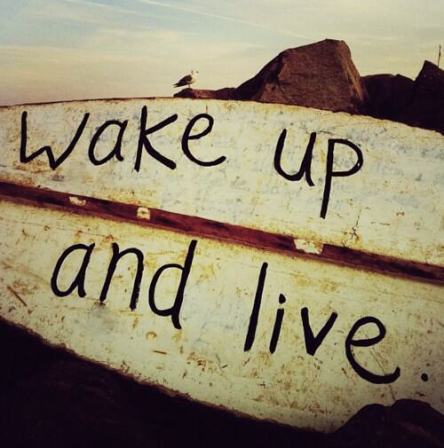
(source)
Although I asked myself this question many a time in the early days as I battled seemingly never-ending problems and symptoms, the answer is most decidedly YES! You will get better, you will you will. I promise!
In the mean time, you can love and enjoy all the wonderfully delicious gluten-free recipes available to us GF’ers, some of which can be found here.
If you have any questions please do not hesitate to contact me here, or post a comment on this page.
 The Gluten Free Lifesaver
The Gluten Free Lifesaver 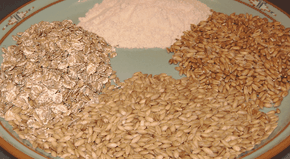
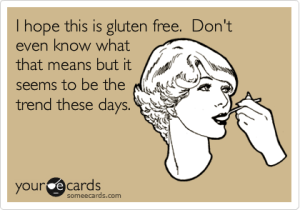













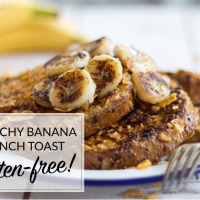

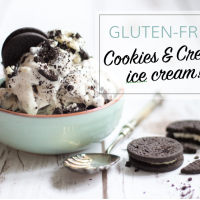



Love reading this information. I am Coeliac (have Antibodies) and have been on diet for 14 yrs. Still have issues keeping it under control due to travelling for work and eating contaminated food.
Was originally diagnosed in 1988 after a traumatic pregnancy but after a year they told me I was ok then another diagnosis in 1993 and finally after a trauma in 1999.
LikeLiked by 1 person
Thank you for stopping by Jo!
It is always upsetting to hear stories of late or wrong diagnosis. It really shouldn’t be that way!
I can absolutely relate to your troubles with gluten exposure out and about. I have moved a lot, and every time I come to a new country I need to learn everything “all over again”. New foods, new restaurants, even new regulations.. It’s a challenge.
I am glad you found the information useful, and I appreciate your feedback!
-Kristine
LikeLike
Hello Kristine. Have you heard of this causing male infertility ? I’m writing for my son. I have also suffered with migraines for 30 years and have tried everything !! Now I will try cutting out gluten to see if that might help. Thanks!!!
LikeLike
Hi Terry!
Coeliac disease can impact fertility in women, so there is a real chance it may have similar effects in men. I don’t know the facts on this topic, but I will research it as it is a very interesting and important question!
Thanks!
LikeLike
This is an amazing explanation! I must admit I have often thought of ‘free from’ diets as a little bit irritating – not because some people genuinely need to follow them of course, but because of how many people seem to jump on the band-wagon! However, after having read this I’m more inclined to believe that it could be beneficial to far more people than I thought. I feel like I’ve been taught a valuable lesson! Thanks! 🙂
LikeLike
Hi,
I am glad that you found it useful! Thank you so much for stopping by, and for your lovely comment 🙂
-Kristine
LikeLike
I found this post very helpful and informative! Thank you!
LikeLike
Thank you Janine, I’m glad to he of help! And thank you for stopping by 🙂
-Kristine
LikeLike
We don’t when it was triggered or how. Several possibilities. I know, I did not have it, or any of the symptoms, before that. In “98, I got throat cancer, i’s been downhill since. I had a month of radiation, and the throat is too close to the brain. I started getting blackouts, fell, fractured my skull, I have some front lobe damage, lost all my hearing on the right and 70% on the left. A few months after this, I started loosing weight. I was throwing up every day, and several attacks of diarrhea most days. And everything tasted like cardboard. I kept loosing weight, started at 170, I get down to 150. The Dr just keeps changing pills, and I keep getting worse. down ti less than 140, and dropping. My wife keeps telling him, the problem is in my stomach, he just keeps changing pill. My wife gets me into Mayo, Scottsdale. I am from Sedona. I’m below 130 and dropping. The Mayo Drs jump on it. 1st, I had somw sort of parasite in my stomach. They had to hit me 3 times with heavy meds. Down to 120, but leveling off. My internal organs are starting to shut down. I was in such tough shape everything about this time is vague. Still get diarrhea, but no more throwing up. My taste buds start working a little. I cab start to taste a little for the first time in over 2 years, I slowly start loosing weight. I never used to have any food allergies, but they test me anyway. I’m off the charts. Wheat, barley,I can’t remember them all, but especially soy. Peanuts somewhat, but not that bad. As I slowly gained weight, the organs started to settle down. It was several months, before the diarrhea, almost stopped. now it’s about once a month. Other than the hearing loss, and very bad Vertigo, I Almost feel human, after 5 years.
LikeLike
What a challenging journey you have been on, and how exceptionally strong you must have been through it all to keep going!
It always breaks my heart to hear stories of people who fail to get properly diagnosed. Far too often I get stories of physicians who refuse to consider investigations into a patients diet. Your problems are of course complex and on a very large scale, but certainly diet plays a great role in both the destruction and the healing of the body.
I am thrilled to hear that you are finally finding your way back to health, and I wish you all the very best! Thank you for sharing your story!
-Kristine
LikeLike
I’m so glad I found this! I’ve just been diagnosed with coeliac, but I can’t see a specialist until January so I’m basically winging it til then. I’ll be poring over this! 😀
LikeLike
Welcome to the wonderful world of gluten free 🙂 It might seem hard at first but just give it time, soak up the information and allow yourself time to heal. Accept that you’ll make a few mistakes at first, it will take some time to learn everything. I am still learning!
The first year is always the most challenging, and after that it gets easier and easier. If you are struggling with set-backs throughout, check out this post http://wp.me/p2Wcvm-7d and also take a look at these: http://thankheavens.com.au/category/resources/tools/
I wish you all the best on your journey, and don’t be afraid to ask lots of questions!
-Kristine
LikeLike
Thanks, that’s so lovely of you 🙂
LikeLike
Any time!
LikeLike
Great, informative article. It really is a lifesaver to find your site. Wish I had found it a few years ago, when I finally found out what was wrong with me. The good news is: when you eat gluten free, your villi will grow back. Family members still offer me wheat bread, and still think I can have “a little”. At restaurants, I’m considered a royal pain. But I feel so much better, it is worth it! 🙂
LikeLike
Stacy, you are quite right; it is worth every bit of hassle to feel better!
Aren’t family members funny like that. I still get comments like “I think you’re being dramatic, it’s just a couple crumbs”. That’s why awareness outside the coeliac community is so important. It’s hard for them to imagine what we’re going through.
Personally I can’t even dream of trying just a little bit. Some days I wish I was a little less sensitive, but other days I thinks it’s an odd blessing because it really stops me from “cheating” 🙂
Thanks for your kind words. It truly is feedback like this that keeps me going with Thank Heavens!
-Kristine
LikeLike
Pingback: Gluten Free Fresh Pasta; Yes, you can buy it in the shops! | Thank Heavens
Pingback: Wheat Free Flour’s | Firenze Fabulous Food
Hi Kristine ,
I’ve stumbled across your website today as yesterday our little girl who is 8 yrs old was diagnosed with gluten intolerance ( 1 count away from Coeliac) . She’s always struggled with stomach aches and headaches etc . We’ve always thought her complaints were reall but others said “don’t worry it’s only nerves” . So now we start our gluten free journey together as a family. My question is how do I access all the gluten free recipes on your site and is there a section for child happy breakfasts and lunches to take to school ??? Dinners we have under wraps as we have basic dinners any way full of vegetables and protein etc . Any help would be greatly appreciated . Cheers Arianne
LikeLike
Dear Arianne, I am sorry that your little girl has had a hard time. It’s so terrible to see someone you love in pain without having the answers. On that note, I am very happy that you finally found the source of her troubles, which means you can now start afresh and look forward to having a healthy daughter!
You can easily access m recipes by using the image menu on the welcome page,6 the recipe tab in the toolbar, the category search in the sidebar, or the search box above my picture on the blog pages.
I would be more than happy to help where I can. Please make sure you check out the Resources category, and read the article “What’s the trouble with gluten?”. It should help you get a handle on things. You can also find plenty of great recipes on my Pinterest account, and you can sign up for my newsletter to receive recipes and information to your inbox.
I wish you and your girl all the best, and please do not hesitate to contact me again 🙂
-Kristine
LikeLike
Thanks this a lot of terrific information in one spot. Very useful 😉
LikeLike
Thanks CathyAnn, I’m so glad you found it useful! 🙂
LikeLike
I love this post, so informative! I am a coeliac too and found this so helpful! Thank you.
LikeLike
Thanks, I’m so happy you liked it!
LikeLike